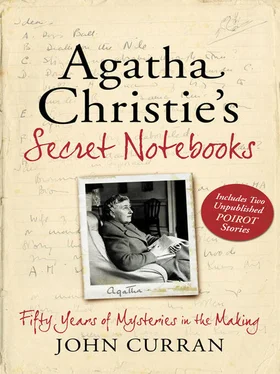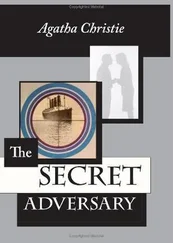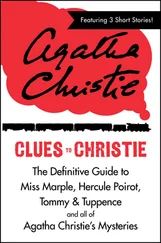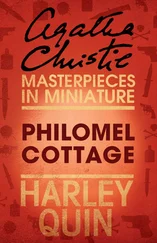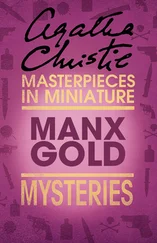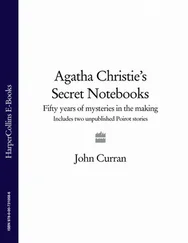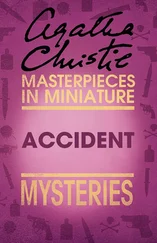E. Rowley goes up to White Hart—Beatrice the barmaid photo of L. and Edmund—Frances and Jeremy—photo—to get H.P’s address [Book I Chapters 11 and 12]
F. David reading letter—get your things packed—go up to London—stay there—I’ll deal with this [Book I Chapter 10]
G. David and E.A.—veiled blackmail—D. says get out of here [Book I Chapter 9]
H. Where is money to be paid? London? Tube? Poirot—seat? etc.—Bessie overhears (David goes to London—to see Lena Tube—Rowley in crowd) [not used]
I. Rowley visits Poirot—urges him to come to Warmsley Heath [Book II Chapter 1]
J. Death of E.A.—David suspected—arrested?—button in dead man’s hand [Book II Chapter 5]
K. Lena and the Church [Book II Chapter 6]
L. Poirot and Lynn—people much the same—don’t change [Book II Chapter 12]
Although most of these, slightly rearranged, appear in the published novel, there are a number of minor differences: scene H does not feature at all; Furrowtown in scene D becomes Furrowbank in the book; it is not a button (scene J) that is found in the room but a cigarette lighter with the initials DH; and scene C in the novel precedes much of the action.
Rosaleen’s religion, apart from being a major factor in her personality, is also an important plot device. Her Roman Catholicism, and its attendant guilt, haunts all of her conversation with David. Read again their scenes in light of the solution and much of the dialogue takes on a different meaning. And it is the scene at the church that gives Poirot one of his clues:
Lena—depressed—says—very worried I’ve been—wants to see priest—asks him—doesn’t go to confession
Priest—Lena—(or clergyman) Go to confession—I’m in mortal sin
Lena gets conscience—her letter—planning of death wickedness—I want to make what reparation I can
Girl and R[oman] C[atholic] church—P sees her
Taken at the Flood is another novel for which quite a few intriguing ideas were rejected:
Lena in London—D. telephones her—goes to station—sees station master—Swings out of express as it leaves—returns to White Hart though window—Knifes E.A.—leaves as clue something he has already missed (lighter?)—goes to call box
L. telephones Anne 9.18
D. “ “ “ (London wants you)
Here we see the set-up of the faked telephone call that establishes Hunter’s alibi. But he doesn’t knife ‘E.A.’ (Enoch Arden) as he finds him already dead from a head wound when he gets there. For much of the notes, meanwhile, Rowley is the villain:
Rowley arranges L’s suicide (in London) has to go to see a bull etc
Does Rowley play the part of Underhay in London—with Lena
While he is not indictable at the end of the novel, Rowley does have two deaths on his conscience. But his playing the part of Underhay in London could be seen as a complication too far. Another suggestion was that Rowley and Frances should work together:
Rowley—jealous of David—has plans—he and Frances agree to blackmail—but Rowley’s idea is to inherit—so Lena must die
In fact Rowley and Frances work independently in the novel, although without any idea of killing Rosaleen.
Possibly button from Lena’s dress found by E.A.’s body—or does Rowley take it away. Shot heard as Anne and R and D are approaching house. Suggested that R could have laid timing fuse to cartridge
A timing fuse to fake a gunshot, thereby confusing the time of death, is a plot device in The Murder at the Vicarage, but otherwise Christie depended only rarely on mechanical means to achieve her effects ( The Murder of Roger Ackroyd being a notable exception) and, thankfully, did not start here.
Although it is preceded by a number of rejected ideas—Nathaniel/Jeremy does not resort to blackmail and murder—the last line of the following note does reflect the reality of the novel. Major Porter, a poignant portrait, agrees, through poverty, to perjure himself but later, in a final futile attempt to regain his self-respect, kills himself:
Cover her Face
Nathaniel who has embezzled a lot of trust funds—wife is Rose—‘county’—shrewd—fond of him but knows his weakness—gallant and sticks to sinking ship. Says at last ‘Of course I always knew he was a crook’…Family all rather crooked—but Rose is straight—(nice!). Enoch is steady character he has come across—conversation in club inspires him to hire Enoch to sound out Lena and levy blackmail. Enoch turns screws on him—he kills Enoch—(a) tries to fasten crime on Lena—or (b) suicide—then goes to Porter—gets him to identify dead man as Underhay Porter desperately poor agrees.
The following, while an interesting plot twist, would have been a difficult one to carry off:
U. is alive—reads inquest—arrives at Doon—sees—Lena—falls in love with her?
It would mean Underhay falling in love with the woman masquerading as his dead wife and, effectively, robbing his fortune.
But the most intriguing of the ideas Christie rejected concern the book’s possible title:
Cover her eyes face—mine eyes dazzle—she died young—outburst by David. Why?
Exactly—why? Why would David Hunter have exclaimed these words? The quotation ‘Cover her face—mine eyes dazzle—she died young’ is from The Duchess of Malfi, and concerns the murder of a sister by a brother. Presumably David would have used it upon the death of Rosaleen—his ‘sister’? Now we understand why Cover Her Face was considered as a title. Or perhaps it was the other way round—Christie saw it as a good title, which it is, and was anxious to work it in? Whatever is the case, echoing, as it does, the critical scene in Chapter 3 of Sleeping Murder (see Chapter 7), it can be seen as further confirmation that Sleeping Murder was written later than formerly assumed.
The Pale Horse
6 November 1961
And I looked, and behold a Pale Horse, And his name that sat on him was Death
Revelation 6:8
A list of names is found on the body of a murdered priest but what do they have in common? Is there such a thing as murder by suggestion? Are the elderly women in Much Deeping really practising black magic?
Although written in 1960 and published the following year, The Pale Horse had an inspiration from many years earlier. Mr P was a pharmacist who, almost 50 years earlier, instructed Agatha Christie in the preparation and dispensing of drugs. One day he showed her a dark-coloured lump that he took from his pocket, explaining that it was curare and he carried it around with him because it gave him a feeling of power. As she writes in her Autobiography: ‘He struck me, in spite of his cherubic appearance, as a possibly dangerous man. His memory remained with me so long that it was still there waiting when I first conceived the idea of writing my book The Pale Horse.’
One of the strongest titles of the last 15 years of her career, The Pale Horse has a horribly plausible plot, a very unusual poison and a genuine feeling of menace over and above the usual whodunit element. At first it seems as if Agatha Christie has changed literary tracks and is writing black magic but, as with many of her titles, what you think you see is not what you get.
Notebook 58 has two pages of Notes on ‘Voodoo’ just before the notes for The Pale Horse. Phrases such as ‘Blood Pact—the sacrifice of a pig—snake vertebrae mingled—the asson or sacred rattle—Legba, the God who removes the barrier—Abobo, a ritual exclamation’ are all noted. The application of these researches can be seen in Chapter 6 of the novel.
Читать дальше
Конец ознакомительного отрывка
Купить книгу
